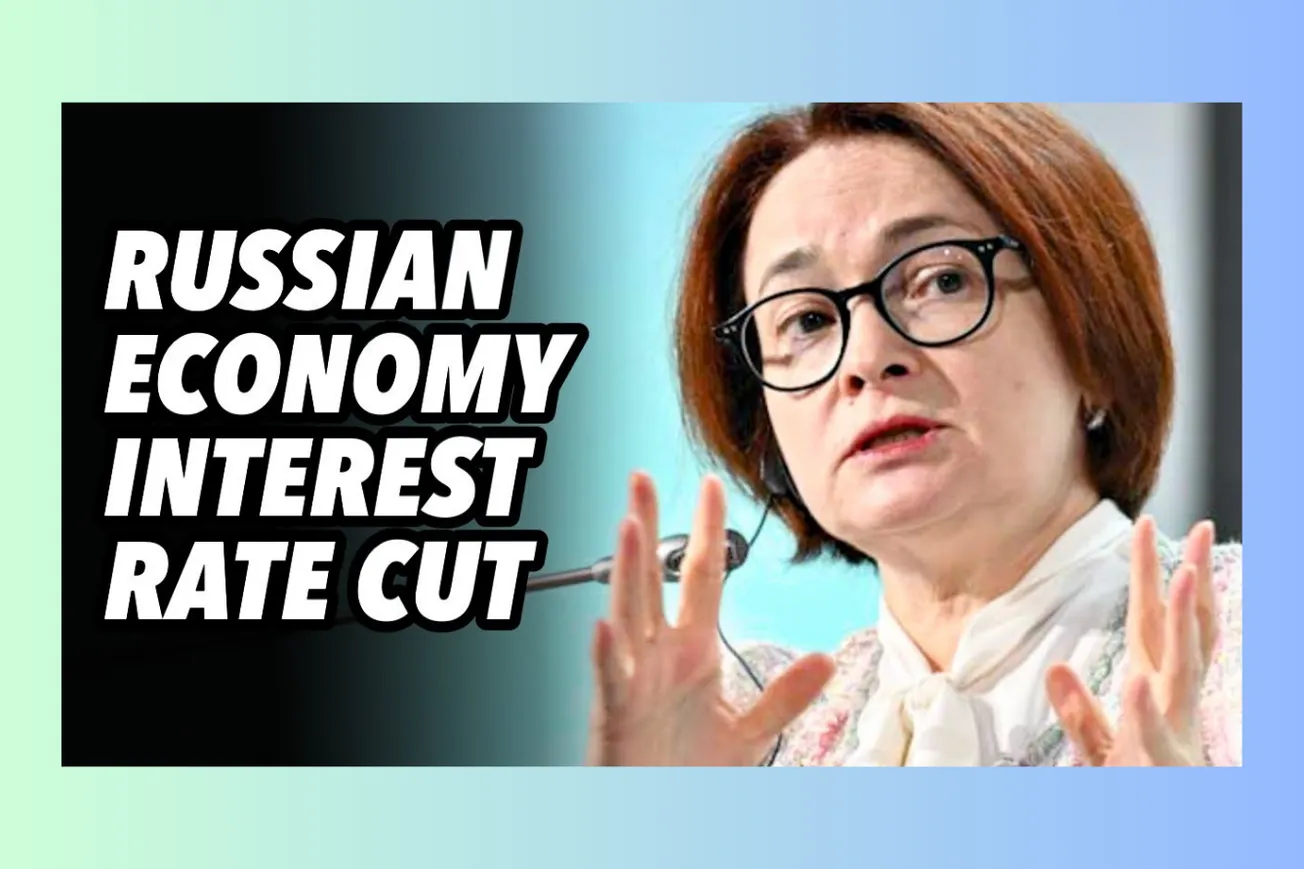Table of Contents
Russia's central bank slashes rates from 20% to 18%, signaling economic stabilization and manufacturing pivot.
Key Takeaways
- Russian central bank cut interest rates by 2% from 20% to 18%, with more cuts expected
- Inflation dropped to 4% in June, with actual deflation occurring in previous week
- Economy contracted in June but rate cuts should prevent full recession development
- Manufacturing growth has accelerated significantly over past three years, shifting from energy dependence
- Demographics remains Russia's biggest long-term challenge, affecting workforce and economic growth
- Banking system underwent major cleanup, with 70-80% now publicly owned and well-capitalized
- Labor shortages emerging across sectors as economy transitions to higher manufacturing focus
Interest Rate Cut Signals Economic Turning Point
- Central bank chair Elvira Nabiullina, known as an inflation hardliner with structural bias toward high rates, surprised markets by cutting rates exactly as economic analysts predicted would happen by July 25th
- The decision became unavoidable after inflation readings showed monthly inflation fell to 4% in June rather than the expected 5%, with Russia actually experiencing deflation in the week preceding the announcement
- Keeping rates at 20% would have pushed the economy deeper into contraction territory and risked creating a built-in deflation spiral that could have made autumn recovery more difficult
- Further rate cuts are expected throughout autumn, with year-end rates potentially reaching 13% as the central bank prioritizes economic growth over inflation concerns
The summer harvest season traditionally brings price relief to Russian markets. Fresh food floods well-organized modern market operations across the country, creating natural deflationary pressure that typically occurs during this period.
- Economic growth projections remain modest at 1-2% for this year, but next year's growth is expected to be substantially higher as the rate-cutting cycle takes full effect
- The ruble will likely weaken deliberately as exporters need compensation for lower energy prices and Russian industrial goods require better competitiveness on world markets
Manufacturing Revolution Reshapes Economic Foundation
- Manufacturing growth over the past three years has dramatically outpaced previous periods, representing a fundamental shift away from Russia's traditional energy extraction-focused economy
- The industrial transformation is broad-based and not concentrated solely in defense industries, contrary to widespread international misconceptions about Russia's economic diversification efforts
- Passenger car production requires significant scaling up to meet domestic and export ambitions, with Russia developing plans to export passenger vehicles internationally
- A stronger ruble would undermine these manufacturing ambitions, making Russian goods less competitive globally and hampering the ongoing economic transformation
Russia's approach to currency management differs fundamentally from Western practices. Rather than measuring economic strength through international trading weight of the currency, Russian policymakers view currency weakness as strategically beneficial during this manufacturing transition phase.
Demographics Crisis Threatens Long-Term Prosperity
- President Putin identified declining birth rates as Russia's biggest challenge, a problem affecting virtually every developed nation including South Korea (below one child per family), Japan, China, and most European countries
- The demographic situation has worsened across Europe to the point where many European countries now face worse birth rate declines than Russia itself
- Career sacrifice remains the primary obstacle preventing women from having children earlier, as many delay first children until late twenties or thirties to establish professional trajectories
- Russia appears to be the only major country methodically working toward comprehensive solutions, with plans for a structured social-economic approach expected within the next couple of years
The solution requires treating demographics as the absolute number one priority over all other issues. Any investment in higher birth rates won't pay economic dividends for approximately 20 years, when additional children join the workforce and begin having families themselves.
- Immediate workforce shortages in the next 10-20 years create tension between demographic goals and immigration restrictions needed for national security
- North Korean workers represent one potential solution, with reports of factories in Russia's Far East already importing North Korean labor to address manufacturing shortages
- Automation and artificial intelligence integration offer alternative approaches, with Putin holding frequent meetings focused on introducing robots and scaling up automated manufacturing processes
Banking System Transformation Enables Future Growth
- Central banker Nabiullina successfully cleaned up Russia's historically problematic banking sector, which as late as 2010 included numerous shady private institutions operated by oligarch groups and criminal organizations
- The cleanup process involved closing most corrupt private banks while strengthening major state-owned institutions like Sberbank and VTB, creating a well-capitalized system capable of supporting long-term investment
- Public ownership of the banking system increased significantly during reforms, with 70-80% of deposits now held in publicly-owned institutions, despite Nabiullina often being labeled as neoliberal
- The reformed banking system provides strong foundation for financing automation investments, industrial development, and long-term economic projects that support Russia's manufacturing transition
Nabiullina's management style includes publicly admitting mistakes, such as acknowledging that interest rate cuts in the first half of last year were too aggressive and fast. This transparency contrasts sharply with Western central banking practices.
- The banking reforms addressed Russia's massive inflation overhang, a problem extending back to the 1960s that required systematic long-term solutions rather than quick fixes
- Results of the banking transformation are visible in industries like shipbuilding and electronics, where improved access to capital enables sustained growth and technological advancement
Russia's transformation during an unprecedented sanctions environment reveals the effectiveness of these economic reforms. The central bank successfully absorbed multiple sanctions shocks while maintaining economic stability and continuing the gradual inflation reduction process.





